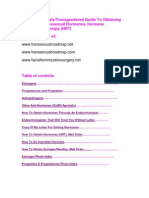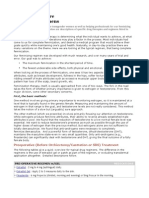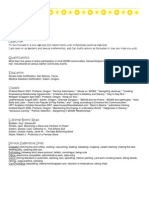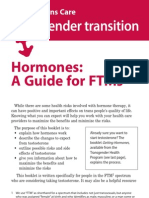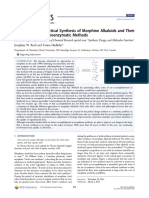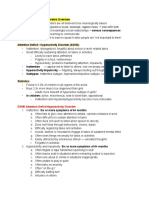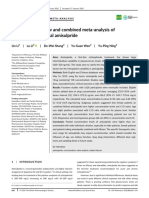100% found this document useful (2 votes)
461 views9 pagesNonbinary Hormones
This document discusses hormone therapy options for transfeminine non-binary individuals and femboys who want some feminization effects without full transition or breast development. It describes conventional hormone therapy that aims for complete transition, and also experimental options for partial feminization through testosterone suppression combined with avoidance of estrogen to prevent full effects. However, the document warns that androgen deprivation alone is not recommended due to risks of bone loss and other health issues from estrogen deficiency.
Uploaded by
Biniam GrafféCopyright
© © All Rights Reserved
We take content rights seriously. If you suspect this is your content, claim it here.
Available Formats
Download as PDF, TXT or read online on Scribd
100% found this document useful (2 votes)
461 views9 pagesNonbinary Hormones
This document discusses hormone therapy options for transfeminine non-binary individuals and femboys who want some feminization effects without full transition or breast development. It describes conventional hormone therapy that aims for complete transition, and also experimental options for partial feminization through testosterone suppression combined with avoidance of estrogen to prevent full effects. However, the document warns that androgen deprivation alone is not recommended due to risks of bone loss and other health issues from estrogen deficiency.
Uploaded by
Biniam GrafféCopyright
© © All Rights Reserved
We take content rights seriously. If you suspect this is your content, claim it here.
Available Formats
Download as PDF, TXT or read online on Scribd
/ 9
